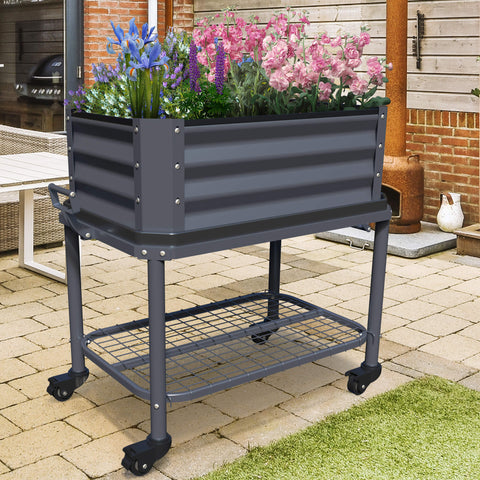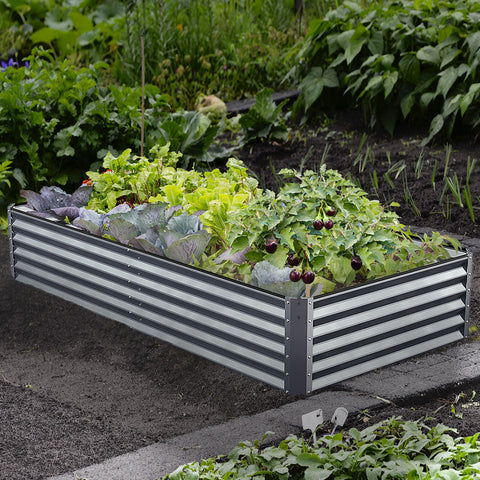Attract pollinators to your garden with an easy to grow plant that blooms sunny flowers every spring and autumn.The following content also has some reference value for raised garden beds.
Margaret Daisy is native to the Canary Islands and is a shrubby annual plant with hills, but can be grown as a perennial plant in Zones 10-11. Margaret Daisy likes cool weather and blooms best in spring and autumn in most areas of Zone 8-11, although it will continue to bloom throughout the summer in areas with milder temperatures. Even when it is not flowering, the dark green and finely trimmed leaves look gorgeous compared with any light colored flowers.
Where does Margaret Daisy grow it
Margaret daisies like cool temperatures not exceeding 70 degrees Fahrenheit, but they also like ample sunlight. Find a place with good average soil drainage and at least 6 hours of sunlight exposure per day. Due to its shrubby appearance, Margaret daisies are very suitable for large-scale cultivation, boundaries, and large containers.
How and when to plant Margaret Daisy
Margaret daisies bloom best in spring and autumn. Planting in spring, flowering in summer and autumn, and flowering best during the cool period of the growing season.
Before planting, add approximately 2 inches of compost and cover to the soil at the designated location to improve drainage and provide the necessary nutrients for the growth of Margaret daisies. Dig a hole twice the width of the plant root ball. Gently loosen the root, release it from the root ball, and then backfill the plant in the hole. Thoroughly compact the soil and water. Forming a doughnut like ring around the plant can help guide water to the place you want. If you plant multiple Margaret daisies, please ensure that the distance between them is approximately 12 to 15 inches.
Marguerite Daisy Care Tips
Taking care of Margaret Daisies is easy. They require cool weather, sufficient sunlight, continuous watering, and minimal pruning to maintain their health, but can thrive in almost any well drained soil.
light
Due to being a temperate plant, Margaret daisies require at least six hours of sunlight per day. If you live in a hot summer afternoon, place them in a shaded area to protect them from the heat.
Soil and Water
Marguerite is native to the rich volcanic soil of the Canary Islands, but can grow in almost any well drained soil, whether it is neutral, acidic, or alkaline.
Water the new Margaret chrysanthemums once a week until they mature. Afterwards, unless the weather is very hot, they only need about 1 inch of water per week. Pay attention to signs of fungal problems, as excessive watering or stagnant water, or poorly drained soil can lead to mold, root rot, and mold formation.
temperature and humidity
Margaret Daisy likes to imitate the sunny but cool climate of the Mediterranean. They are very tender in cold, and unless brought indoors, they will die at temperatures below 40 degrees Fahrenheit. In extremely hot weather (with temperatures exceeding 70 degrees Celsius day and night), Margaret daisies may stop blooming. If this happens, trim any fallen flowers, and when the temperature cools more regularly, the plant may bloom again.
If you plant Margaret daisies in soil with good drainage and rich organic matter, you should not need fertilizer. In fact, using it can produce long legged plants, rather than dense plants. That is to say, if your soil lacks the necessary nutrients, supplementing it with universal liquid fertilizer once or twice a month may be helpful.
Pruning Margaret daisies involves withering the flowers and cutting off the dead leaves to promote new growth and increase the plant's density.
Encapsulation and Restatement of Margaret Daisy
If you give Margaret daisies a flower pot that is large enough for them to thrive in, then they are the ideal container plants. Before potted, be sure to check Margaret's plant care label to understand height and space requirements, as some varieties can reach heights of 2 to 3 feet.
Spring (after the last frost of this season) is the best time of year for potted and re seeded Margaret daisies. If you are transplanting your plant, fill a pot slightly larger than the previous container with fresh potting mixture. Dig a hole in the potted soil, thoroughly water it, and then add plants. Ensure that the container is well drained and add more water to place the plants.
Margaret daisies are not troubled by most pests, although common garden insects such as aphids, mites, and thrips may sometimes attack them. The use of neem oil can safely and effectively remove pests from gardens.
Excessive watering can cause root rot, and excessive heat can lead to rapid root degradation.
How to spread Margaret Daisy
Increase the inventory of Margaret daisies with stem cuttings. In late summer, cut two to four inches from healthy stems that never bloom. Peel off an inch of leaves and dip them in rooting hormone. Plant the stem in potted soil. Place the potted branches in a place where indirect sunlight can be obtained and keep them moist. When new leaves appear, you will know that the branches have taken root. In the early spring after the last frost, transfer to your garden.
You can also plant Margaret daisies with seeds, but you want to start planting indoors before the last frost (approximately 6 to 8 weeks before you want to plant seedlings outdoors). Place the seeds on a damp fermented mixture and gently cover with more mixture. You don't need many special techniques to sprout, just water regularly, maintain a well drained soil at around 70 degrees Fahrenheit, and have a sunny place for the seeds to sprout.









